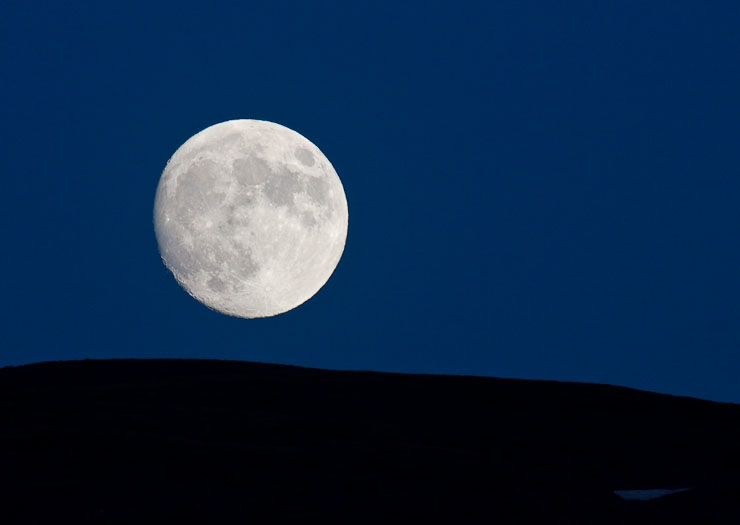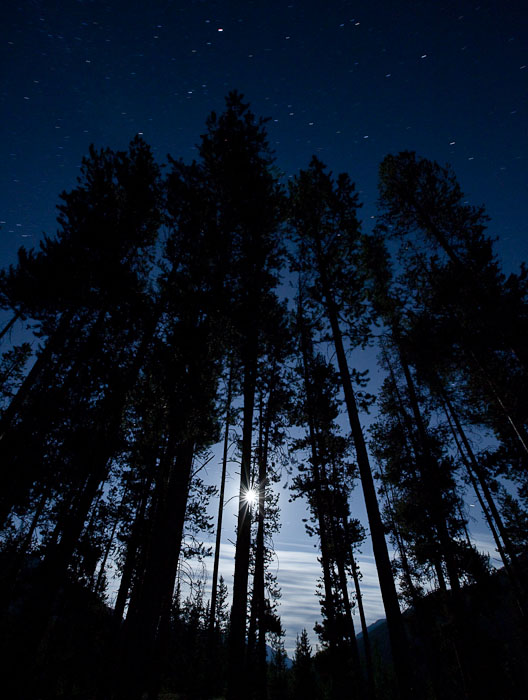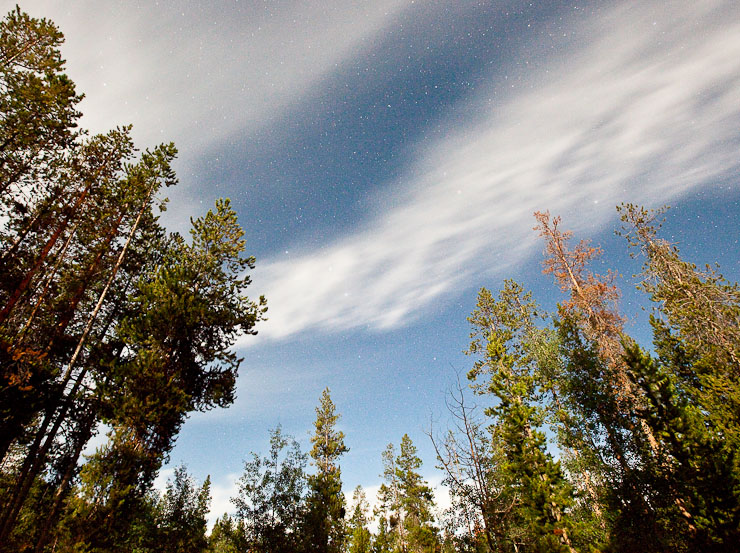
I’ve been going through more photographs from the past four months (since the fall semester of graduate school began) that I simply didn’t have time to process–I could make them, download them, and move on to more urgent projects. While in Utah this past August, car-camping with my girlfriend and her parents in the High Uintas Wilderness Area, I began to experiment with night photography. I went with the closest subjects I had to work with: the trees surrounding our campgrounds, the clear skies, and the bright moonlight.
I especially wanted to create nighttime images–whether they ultimately “looked” like they were photographed at night or not–with static stars. The stars begin to “curve” after 30 seconds of exposure as the Earth rotates your tripod for you. This means that the long exposures need to be less than 30 seconds, which means that high ISO becomes critical.

This is a good example of why you want the shutter speed to be faster, but not necessarily open up your aperture to give the sensor light. In this case, I wanted a “starburst” effect from the sun moon between the trees, and I wanted a nice, blue sky behind my silhouettes. Unfortunately, I had not yet begun to experiment with ISO above 800 for this type of image, and the stars are streaking and “muddy” as a result. However, it was a good learning experience, and got me thinking about another attempt the next night at something a little crazier.

As it turns out, the trick to making moonlight turn to “daylight” is a fairly obvious one: set the white balance to daylight (5500 K). After all, the moon is simply taking the sun’s light and reflecting it back at us. The time exposure takes care of the sky, and the moon was at my back, illuminating the trees.
One of the best tricks I learned is to use the camera’s Live View function and a good light, in this case my Inova X5 flashlight, to manually focus on one of the trees. I would then make an exposure and check for critical sharpness on the back of the camera. The flashlight trick really, really helps, but it wouldn’t work without Live View and the ability to zoom in to 100% (the actual pixel level). The viewfinder was just too damn dark.
